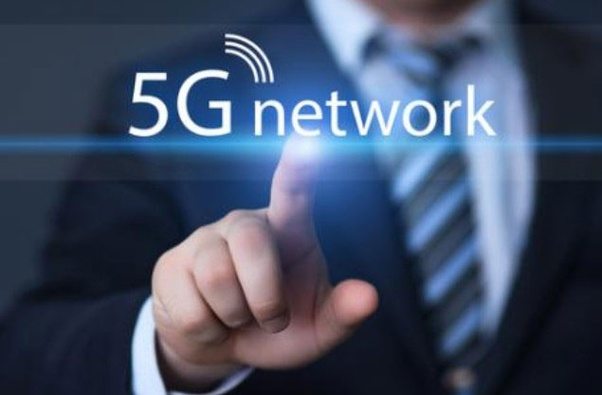The race to be first in 5G service
The past few weeks has witnessed significant news coverage on the next generation of mobile network, referred to as 5G, as a sequel to 4G which is also known as long-term evolution, or LTE. This column has written extensively on LTE. In its own right, LTE represents significant improvement over its predecessor (3G), but if […]

The past few weeks has witnessed significant news coverage on the next generation of mobile network, referred to as 5G, as a sequel to 4G which is also known as long-term evolution, or LTE. This column has written extensively on LTE. In its own right, LTE represents significant improvement over its predecessor (3G), but if half of the hype about 5G is realized, the difference between this network and LTE would be like night and day. Little surprise then that over 10 major telecom and phone manufacturing companies are racing to be the first in the market.
The list of contenders is long for the various aspects of the 5G network: service and manufacturing of modems and phones. For example, concerning modems, Intel, the computer CPU manufacturing giant, announced its intention to participate in 5G via the company’s new XMM 8160 5G modem, which is set to be released to manufacturers during the second half of 2019, with the first devices using the chip coming in early 2020. Intel envisions using this modem across phones, PCs, and broadband hubs. Anticipated speeds are in the range of 6 gigabits per second. The modem will support both the standalone and non-standalone specs for the 5G NR (New Radio) standard, as well as backward compatibility with 4G, 3G, and 2G networks in this one chipset. Additionally, Intel says that the modem will support both millimeter wave (mmWave) spectrum (see below) as well as lower-band parts of the spectrum. Thus, regarding speed, while current LTE download speeds have maxed out at approximately 50 megabits per second – with typical speeds that are actually much lower – 5G networks have been demonstrated that run at more than 100 times the speed of LTE. More than 17 companies – including Samsung, Nokia / HMD, Sony, Xiaomi, Oppo, Vivo, HTC, LG, Asus, ZTE, Sharp, Fujitsu, and OnePlus – are reportedly actively working with Qualcomm and its Snapdragon X50 5G NR modems. Huawei and Samsung are reportedly both working on their own in-house 5G modems.
In addition to speed which should allow you to download stuff before you can wink an eye, 5G will power applications like self-driving cars, telemedicine, and connected devices within the context of Internet of Things.
When do we expect 5G to actually arrive? Perhaps very soon – in half a year, may be – but I’ll suggest you shouldn’t hold your breath. Verizon, an American telco, promised field trials 3 years ago, but has only recently launched its Home 5G broadband service in select neighborhoods in the US. However, the company is not using the industry standard of the 5G network but a proprietary variant. Thus Verizon appears to be “fudging its way to the starting line.” Verizon meanwhile is planning to switch to the industry standard in 2019. AT&T is reportedly poised to launch a mobile 5G service this year. Around the world, carriers in Korea, Japan and China are set to make big 5G leaps the next year.
Telecoms in South Korea have promised to launch commercial 5G services on 1 December 2018. The nation’s three mobile carriers – SK Telecom, KT, and LG Plus – plan to provide 5G services using mobile routers first rather than smartphones. The services on smartphones will be available in March of 2019. (Mobile routers provide mobile connections for Wi-Fi devices.) It is interesting to know that the three telecom companies in Korea agreed with the Korean government to roll out their 5G devices on the same day (1 December 2018) to avoid heated competition for the title of the world’s first 5G service provider. This kind of disposition (egalitarianism) is typically Korean. Meanwhile, SK Telecom showcased a base station for its 5G network last week Wednesday. We learn from this event that the base stations for 5G are much smaller than those for LTE. SK telecom also reported that a 5G base station also has 32 antennas, compared to 4 for LTE. With more advanced technology and more antennas, the idea is that each base station can process more data – up to eight times – compared to LTE base stations.
The roundabout approach to 5G service deployment is notable. For example, as 5G-compatible phones aren’t available yet, AT&T plans to deploy “pucks,” or mobile hotspots, that capture 5G signals and broadcast Wi-Fi, giving your devices a portable Internet connection. This is similar to the technology that the South Korean companies plan to rollout in less than two weeks!
Your current smartphone will not be able to use 5G, but 5G compatible phones are expected to be available in 2019-2020 timeframe. You should also expect “early batch issues-” such as spotty coverage and dramatic signal drop-off – when 5G-compliant phones hit the market. It is known that the high-frequency airwaves – which is the key to the massive speedup in 5G and often referred to as millimeter-wave spectrum – require a lot more “small cells,” or compact boxes that broadcast and carry cellular signals. The range of such spectrum isn’t great. Hence the need for carriers to deploy a lot smaller cellular radios (small cells) around any area that gets a 5G signal.
